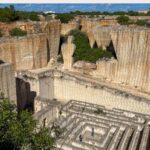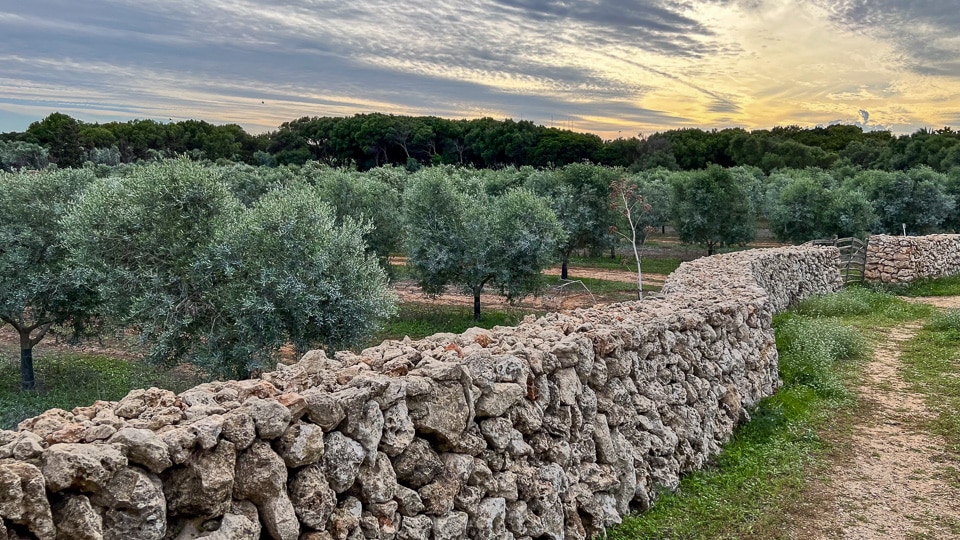
It’s tempting to compare the island of Menorca with Mallorca, since both are part of Spain’s Balearic Islands off the eastern Mediterranean coast of the peninsula. But visiting one in no way means you’ve experienced them both.
Menorca is the quieter, calmer cousin of Mallorca, if you will. And it’s a miniature. At one fifth the size of Mallorca (Menorca is less than 300 square miles, roughly 30 miles long by 10 miles wide) and has just 1/10th the population of its bigger neighbor.
The appeal of visiting Menorca comes in various stripes: the unique Cami De Cavalls hiking path that circles the island, the UNESCO World Heritage sites collectively called the Talayotic settlements, and the wealth of picturesque little coves whose rocky ravines melt into small sandy beaches. Add on Menorca’s UNESCO biosphere reserve and the growing agritourism hotel model, and you have a destination that's a perfect place for nature lovers, history buffs, and those seeking a peaceful Mediterranean escape.
Table of Contents
History, Geology, and Commerce
Menorca (sometimes written Minorca in English) is the northeastern most island of the four populated Baleares, and possibly the windiest. For historic context, that positions it closest of the four islands to Rome.
Like all the Balearic Islands, Menorca is not volcanic, but a result of this section of the ocean bed being pushed up some millennia ago. It is extremely rocky, hilly, but not mountainous. From its highest point, the lone El Toro peak of 1,175 feet, you can take in panoramic views of the entire island and the surrounding turquoise waters. Crisscrossing the island on backroads gives the impression of being on an English lane: rocks cleared from fields and groves are piled into walls lining both sides of narrow roads. Still, rocks are strewn everywhere, and Menorca has long been a source of quarried stone. Given its rocky coast, it’s also the site of dozens of caves.
The island's history dates back to its Talayotic settlements. See examples of these archeological sites below. Similar to Mallorca, Menorca’s earliest inhabitants were known for their talents with slings and were recruited as mercenaries. And like Mallorca, the control of the island changed hands with some frequency. Considering the Punic Wars, Roman occupation, Greek influence, Arab and Jewish populations, and general proliferation of piracy up through the Middle Ages, Menorca was a handy wayside stop.
On the east, the city of Mahón (Maó in the local language) is one of the biggest natural ports in Europe. It’s offered safe harbor to ships through the centuries.
You can listen to Kris's reports on Menorca and Mallorca by visiting her Travel Writers Radio Soundcloud page. For more details on Mallorca (and how to avoid the crowds), read the Travel Past 50 guide to best things to see all across the island of Mallorca.
Unique to the Balearic Islands, Menorca was a British possession for nearly a hundred years, through the 18th Century. It was the British who moved the capital from Ciutadella on the west coast to Maó on the east, due to the significance of the port. British influence is seen today in language, cuisine, and architecture, especially in the administrative city of Mahón.
You might be inclined to visit one of the historic windmills you’ll see along the waterfront, but these are reconstructed models no longer in use. They are meaningful to the island's economy, though, because grain was shipped here from the peninsula, ground into flour, and shipped back to Spain.
The official languages of Menorca and all the Baleares are Catalan and Castilian Spanish. While the written language you'll see on signs and menus is Catalan, the spoken dialect of Menorcan is, we're told with some pride, difficult even for the Catalans to understand.
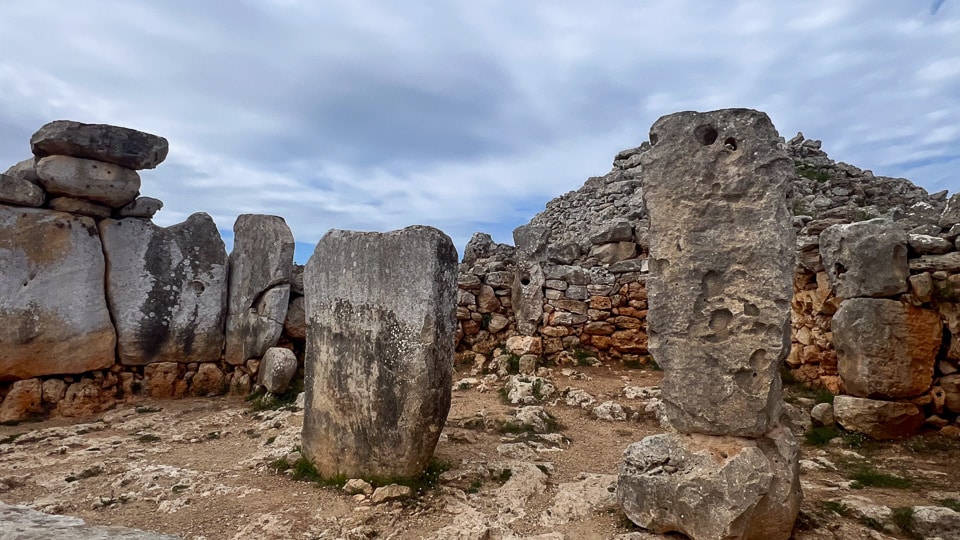
Archeological Sites
All of Menorca is dotted with Talayotic settlements. The UNESCO World Heritage designation of Talayotic Menorca includes both prehistoric settlements and burial places, dating from the Bronze Age (1600 BCE) to the Late Iron Age (123 BCE). The structures are made with very large blocks of stone and indicate both astronomical orientation and visual connections with each other.
We’re highlighting some major sites, but it’s easy enough to detour to dozens of other sites as you go about your business (or beach combing). Just follow the signs or use a handy map provide by tourist offices.
Torre d’en Galmés
This large prehistoric settlement is a great place to start. Three towers of rock stand guard over the ruins and the coastline. Fine examples of the iconic T-shaped monuments which apparently marked dwelling entrances are found here. The entire area is open to visitors who can walk into the ruins of structures, all similarly designed with large front reception rooms, smaller back rooms (possibly kitchens) and hidden side rooms (possibly bedrooms). Both the size of this settlement and the massive rocks used are impressive.
Naveta d’es Tudons
This structure, unique to Menorca is one of the best preserved megalithic tombs in the Balearic Islands. It dates from 1200-750 BC, and is remarkable for the size of stones used and its inverted ship hull shape. An opening on one end allows a view of the two interior levels. The Naveta d'es Tudons can be found just outside of Ciutadella.
Camí de Cavalls
A destination within a destination, many travel to Menorca simply to walk this trail. The Camí de Cavalls (Camino de Caballos in Spanish, which translates to horse path in English) serves walkers, cyclists, and horses. This 185 kilometer (115 miles) 20-stage path is now a protected right of way and one of Europe’s long-distance footpaths, or GR routes (known in Spain as Gran Recorrido Sendero).
Originally, the paths connected watch towers around the island. While sections were certainly in use in pre-Roman and Roman times, it was dubbed a royal way by the British in 1736 and shows up on maps of the island dating to 1780.
In the early 2000s, the entire route was completed. With so many small stages, it’s easy to use at your own pace for daily walks or to attempt in its entirety, with many options for food and lodging along the way. The coastal path is rocky – no surprise – and has its ups and downs as it navigates across the “torrents” that carry rainfall to the sea.
Among the favorite charming sights along the Cami de Cavalls are the trademark wooden gates made of hard old olive wood. The top pieces are curved high, preventing animals from jumping the gates, and then the rails are progressively flatter toward the bottom, where they parallel the ground. Find plenty of picturesque lighthouses and small coves long the way.
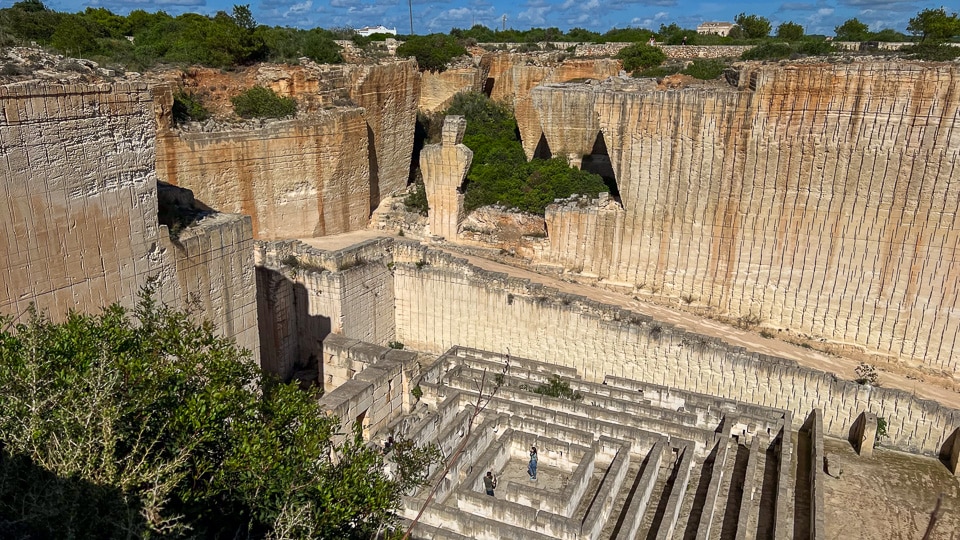
Caves and Quarries
If you’d like to explore Menorca from the ground up and get a real sense of its geology, visit both these two unique sights.
Sa Cova de s’Aigua
This natural cave of about 2,500 square meters (almost 27,000 square feet) is of archeological significance as well as geological. Informative guided tours of the cave start right in the city of Ciutadella and lead down a flight of stairs to an easy walkway through the cavern. A huge underground lake holds human, animal and sea creature remains pointing to the multiple uses of this natural cave area over time. With a guide’s help (visits are only open to guided groups), the beautiful variety of minerals, colors, fossilized lifeforms appear in and amongst the stalactites and stalagmites.
Lithica Quarries
Even I, who grew up in an area dotted with granite quarries, wouldn’t have expected this. The limestone Lithica Quarries, near the town of Ciutadella, showcase the methods of extraction from original manual work to the mid 20th Century mechanical stone cutting.
Through the vision and generosity of benefactors, this massive area of several adjoining limestone quarries has been transformed into a series of botanical gardens. The deep pockets of quarries, in fact, offer micro climates, so gardens range from olive, almond and orange groves, to meadow lands, thickets, medicinal herbs, and flowering gardens. A water garden and medieval garden provide good meditative spaces. A labyrinth at the bottom of a giant quarry space offers fun and a perfect spot for outdoor performances and events. The whole is managed by a private foundation. Allow plenty of time to wander.
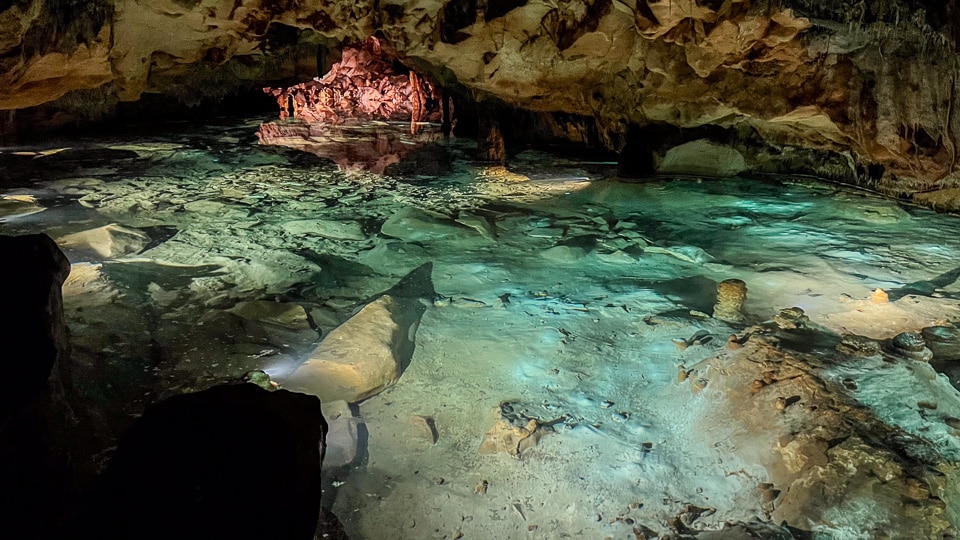
Ciutadella
The island's rich history can be gleaned in both historic towns of Ciutadella and Mahón. On Menorca’s west coast, Ciutadella is arranged above a pretty little harbor and around an old central square, Placa des Born. It was founded by the Carthaginians, and has bobbed back and forth between Christians and Moors while also serving as an important stop along Mediterranean trade routes. The defense against a brutal raid by Turkey in 1558, during which many were killed and imprisoned as slaves, is still marked each year on July 9.
Around the Plaça des Born are the Ciutadella’s main sites, the Cathedral of Menorca and the Town Hall. The gothic Cathedral is still the religious center of Menorca, even though the administrative capital moved to Mahón. It sits beside the town hall, the former royal palace until 1722.
Enjoy a walk from the square down to the port filled with modest fishing and pleasure boats. Or stroll through the old town on cobbled medieval streets to find boutique shops and small restaurants. Placa dels Pins (Plaza of the Pines) is a fine spot to catch coffee or lunch.
Along the waterfront, driving south from the center of town, are a range of holiday properties for those who want to look out over the sea at sunset. An old pier excellent for a picnic and the new ferry terminal are located here.
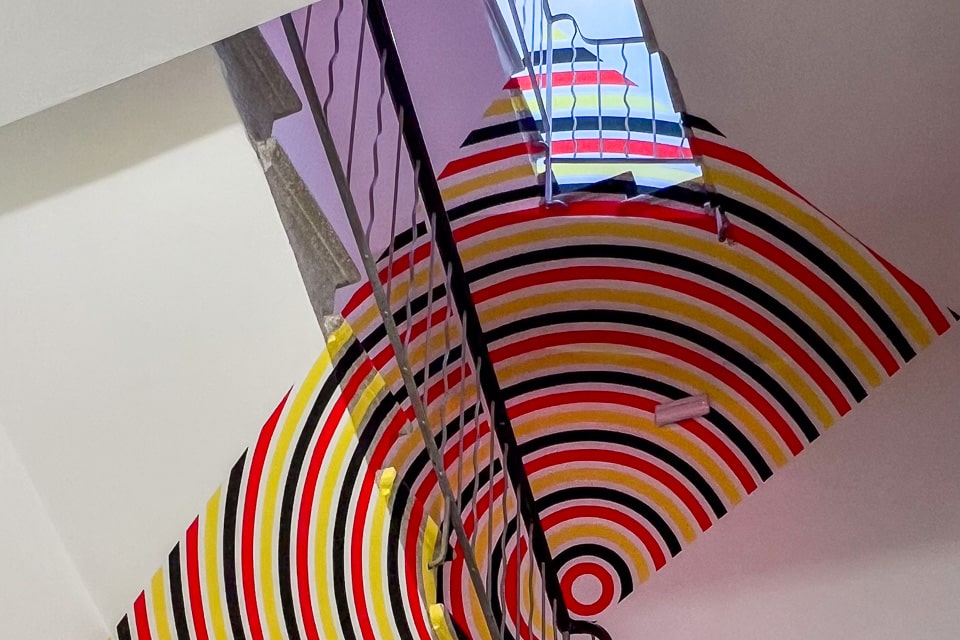
Mahón (Maó)
The Capital of Menorca, Mahón has its own medieval history. While it, like Ciutadella, has been home to waves of dominating forces (Carthaginians, Roman, Arab, British) it is also important for its natural setting. The Port of Mahón, one of the largest natural harbors in the world, was in fact the reason that England relocated the capital here from Ciutadella. Mahón also rests beside the important wetland areas of S’Albufera des Grau Nature Reserve. There's plenty to see and do Mahón.
The Port
Walk along the port. Sidewalks extend all along the five kilometer waterfront, or you can hop a boat excursion for a port tour.
Museu de Menorca
The Museum of Menorca is housed in a Franciscan monastery. It contains primarily archeological finds from prehistory to the British occupation. A prized item is the bronze bull unearthed in the Talayotic settlements, probably a valuable trade item of the time.
Gin Xoriguer Distillery
It's great fun to visit this distillery, especially when taking the time for a guided tour to witness the painstaking process of selecting juniper berries. Xoriguer Gin is still custom-distilled under the watchful eye of the master distiller. While there have been some label design changes and brand extensions, Xoriguer (named for the kestrel bird found here) has remained true to its small batch production. Find samples and merchandise in the distillery’s shop, and purchase a glass of Pomada, a delightful slushy cocktail of gin and lemonade.
Teatro Principal and Art Galleries
One of Spain's oldest opera houses, the Teatro Principal in Mahón is the town's cultural center. Check their calendar in case you are lucky enough for a live performance, or at least a tour of the interior.
Across the street is the striking gallery, Albarrán Bourdais. Opened in 2021, this is the newest location and effort by Christian Bourdais and Eva Albarrón, whose projects include a gallery in Madrid and Solo Houses (architectural projects) across Spain. We were delighted to visit an exhibition of Felice Verini in the Menorca gallery.
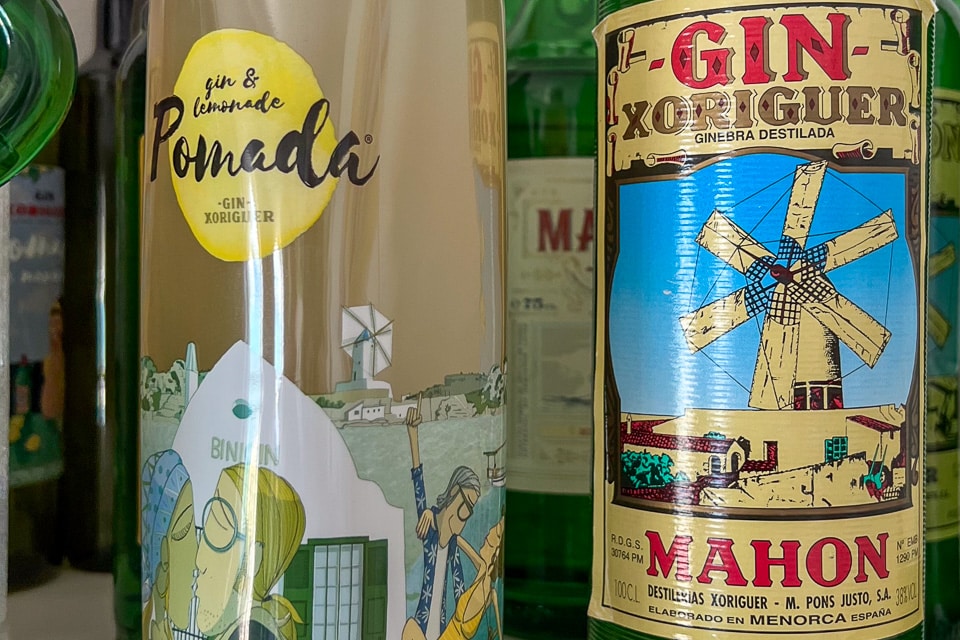
Hauser and Wirth Gallery
Situated on the island Isla del Rey in the Mahon harbour, Hauser & Wirth deserves a little day trip of its own. In the 1800s, a naval hospital was constructed on the island. After falling into disuse, the hospital was developed for visitors who could learn about the hospital's medical and military history and enjoy the small island's flora and fauna. Later, other buildings on the grounds were purchased by Hauser & Wirth, operators of some twenty galleries in North America, Europe and Hong Kong.
Exhibits change each season. In September 2024, the space was devoted to Roni Horn and Eduardo Chillada with exceptional shows. Stay to enjoy the Cantina restaurant and gift shop.
Admission to the museum and gallery is free. In season, the round trip ferry departs the port of Mahón every hour on the hour.
Shopping
Given its status as Menorca's capital and primary port, Mahón is the place to shop on the island, and a good way to learn about the history of commerce in Menorca. After World War II, mills and industry gave way to tourism and the production of shoes and jewelry. Most well known are the classic Menorcan abarcas, sold almost everywhere across the Belearic Islands.
Costume jewelry (you might recognize the Majorica brand) is popular, too, across the islands.
Window shop along Mahón’s main artery, and don’t miss the Pretty Ballerina store – Calzados Jaime Mascaró – with the primo Mascaró shoe brand. Don’t be like me and wonder why I didn’t buy those exquisite shoes or the pearl earrings and pendant I’ve been wanting to replace.
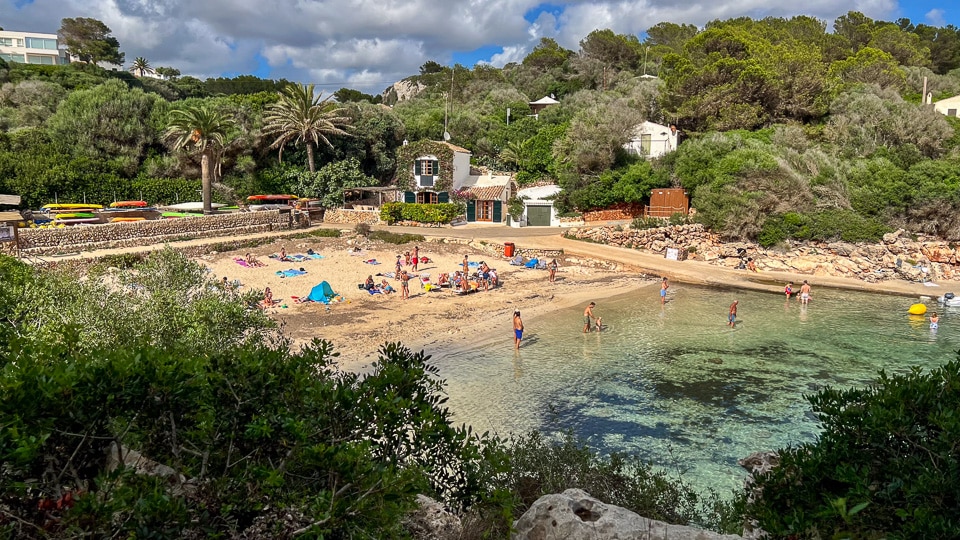
Biosphere, Beaches, Fishing Villages and Water Sports
Along with the Cami de Cavalls, the natural habitat of Menorca is a major draw. Not far from Mahón (nothing is too far away) is the s’Albufera d’es Grau Nature Reserve, a biosphere reserve. This natural wetlands area is a bird sanctuary attracting over a hundred species. It's commonly used for easy strolls and bird-watching. UNESCO declared Menorca a biosphere reserve on October 7, 1993.
Adjacent to the s'Albufera d'es Grau sanctuary, the seaside village of Es Grau has broad beaches of fine white sand with shallow entry to the sea. It's a lovely village with cute little properties along the small fishing port. Seems perfect for families or anyone's rest and relaxation.
To the South of Mahón, visit Es Castell, another picturesque port filled with small vessels and lined with easy-going restaurants.
For beach lovers, Plaza san Bous is widely recognized as the longest beach. But we were also attracted by the numerous little coves with tiny protected, sandy beaches and safe water play. Some of Menorca's beaches are in the middle of neighborhoods, others are just isolated inlets. The coves are generally surrounded by pine trees and rocky inlets, perfect for hours in calm waters edged by natural beauty. Experiment with a new beach destination each day. Visitors arrive by foot, car and boat.
Left with a day to play, I headed to the friendly Cala de Binissafuller on the south coast of Menorca. I found a great little restaurant nearby (see below), some trails wrapping along the coast, and public facilities. The beach was mostly popular with locals, young and old, families and couples, and a smattering of tourists, too, all totaling just two or three dozen people.
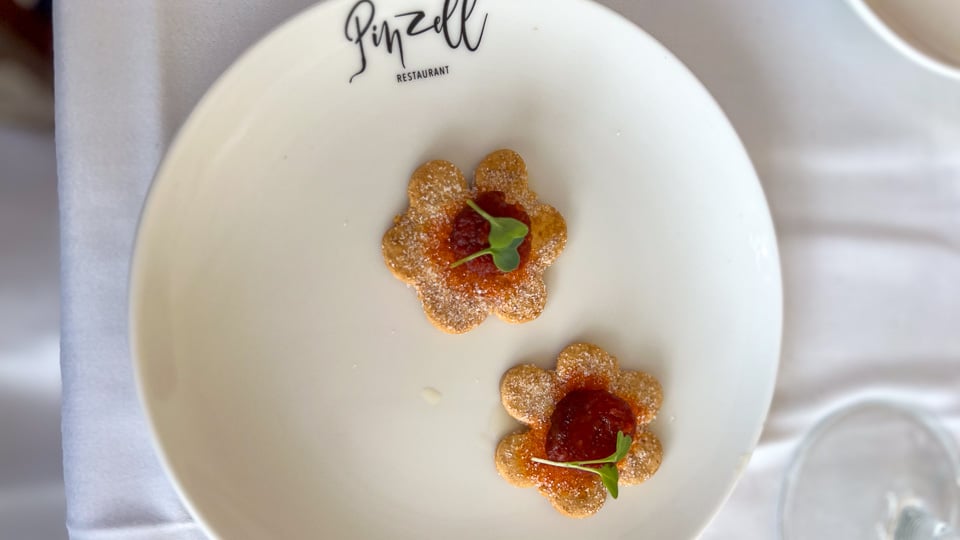
Restaurants and Local Food
Look for local products like olive oil, wine (yes, Menorca has its own very nice wines), sobrasada (a loose paprika colored sausage), tumpet (an eggplant and vegetable terrine) and the ever-popular ensaimada pastry. Let's not forget the internationally available and delicious Mahon cheese. It's widely believed mayonnaise comes from Mahón, too. These local favorites are presented at Menorca's consistently good restaurants. Here are some restaurants we tried and can recommend.
Es Castell and South
La Barqueta. Es Castell. Wonderful mussels and patatas bravas by the port.
Restaurant at Hotel Sant Joan de Binissaida. A fine restaurant catering to its hotel guests and for special events. I returned here almost every night to sample the local cuisine, from salads, to fish and meats and cheeses. Arrive early to tour the grounds or arrange an olive oil tasting in advance.
El Txoko. A garden setting tucked into the little neighborhood beside the Binissafuller beach cove. I enjoyed a delicious salad and a peaceful hour people watching.
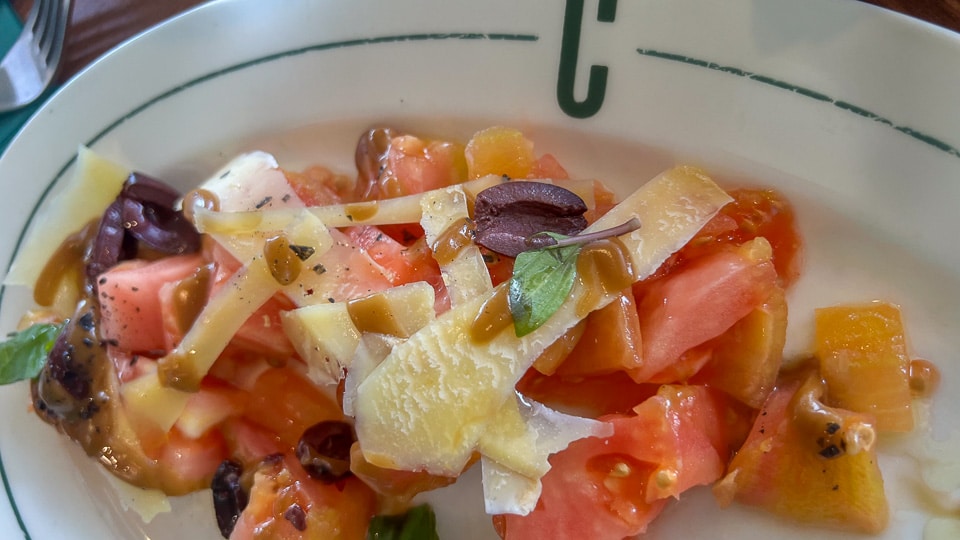
Mahón
Ses Culleres. An excellent restaurant in old Mahón, by the locals behind the Seis Forquilles group. We went a bit crazy with an elaborate tasting menu, and didn't regret one bite.
Cantina at Hauser & Wirth. A lovely indoor/outdoor eatery adjacent to Hauser & Wirth Menorca gallery. Though I wasn't ready for a full meal, I thoroughly enjoyed sitting here a while before catching the ferry back to town, accompanied by a Pomada cocktail and a plate of mouthwatering olives.
Ciutadella
Restaurante es Pinzell. Here's a classic restaurant focused on fresh local ingredients, situated in the relaxing main square, PLaza dels Pins.
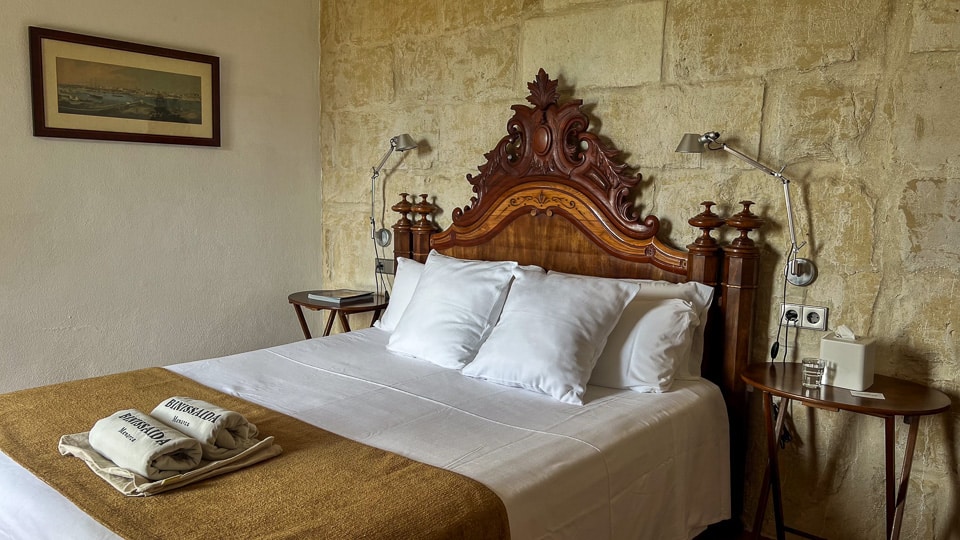
Hotels
In keeping with the Menorca vibe, the hotels in general are focused on health and wellness and relaxation. More than 70 hotels provide visitors the options of being in urban or rural settings, on the coast or the interior. We only sampled this one property, but wanted to stay longer and mix it up. Count on all Menorca hotels to offer help in arranging your island activities.
Sant Joan de Binissaida. A big player in the agritourism movement in Menorca.They are renewing the land with olive trees, managing small olive oil production, and hosting events and hotel guests. The various rooms are named after musicians. The property opens to a section of the Camí de Cavalls. Find all the amenities you need on site, plus free parking.
When to Visit Menorca
Menorca really is a year round destination. While most would consider November to March to chilly for swimming, that's when the hikers and cyclists can still enjoy the Mediterranean climate and green scenery. June to August is the high season, so we recommend avoiding those times.
Getting to Menorca
For North Americans, seasonal direct flights from Newark to Palma Mallorca make connecting to Menorca easy. Direct flights from Palma are quick, under 40 minutes. Unless you are transporting a car, this is the logical way to arrive. Many car rental companies service the Menorca airport.
From Europe, direct flights are available from the UK, Belgium, Switzerland, France, Norway, Germany, and Italy.
Ferry service to Menorca is availalbe from five cities: Alcudia and Palma (Mallorca); Toulon (France); and Barcelona and Valencia (Spain).
Up Your Travel Skills
Looking to book your next trip? Use these resources that are tried and tested by us. First, to get our best travel tips, sign up for our email newsletter. Then, be sure to start your reading with our Resources Page where we highlight all the great travel companies and products that we trust. Travel Accessories: Check out our list of all the accessories we carry to make getting there and being there a lot easier. Credit Cards: See our detailed post on how to choose the right travel rewards credit card for you. Flights: Start finding the very best flight deals by subscribing to Thrifty Traveler. Book your Hotel: Find the best prices on hotels with Booking.com. See all of the gear and books we like in one place on our Amazon shop.Got a comment on this post? Join the conversation on Facebook, Instagram, or Threads and share your thoughts!

